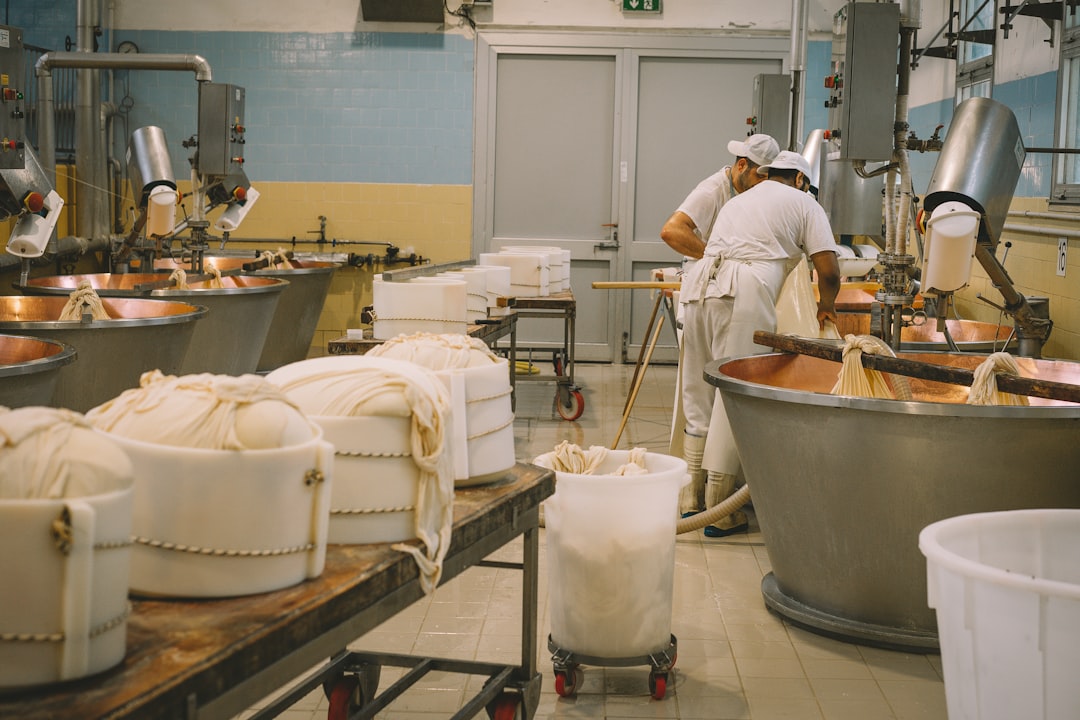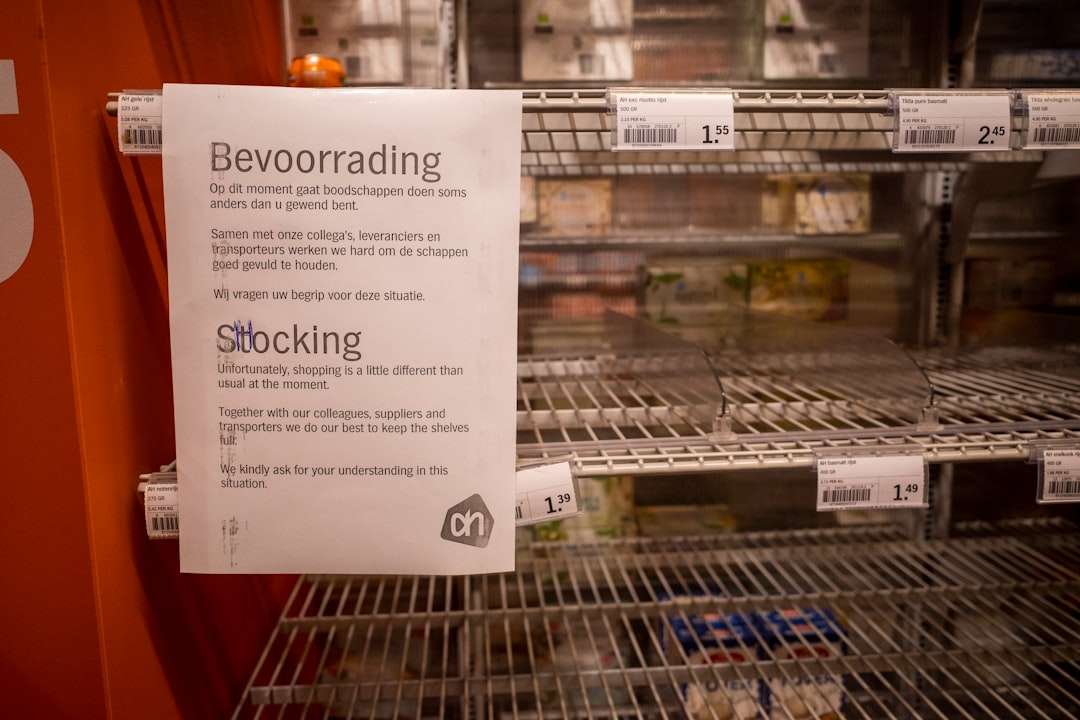

Engage prospects with a scan and streamline customer engagement with FREE QR code marketing tools by Sona – no strings attached!
Create a Free QR CodeFree consultation

No commitment

Engage prospects with a scan and streamline customer engagement with FREE QR code marketing tools by Sona – no strings attached!
Create a Free QR CodeFree consultation

No commitment

QR codes bridge the gap between physical food packaging and digital information, giving brands a scalable way to prove product integrity and enhance brand transparency at the exact moment of need. A scan can open traceability records for a regulator, ingredient details for an allergen-sensitive shopper, or a recipe that transforms a trial purchase into a loyal habit. Because QR codes work with native smartphone cameras, they bring immediacy to complex information without requiring apps or long URLs.
Many teams still rely on manual logs, static inserts, or disconnected microsites that fail to capture intent or attribute results. This introduces friction for inspectors and consumers alike, and it deprives marketers of insight that would otherwise inform smarter campaigns. With a modern QR stack, food manufacturers can turn every package into a living content hub and every scan into a measurable signal tied to SKU, lot, location, and audience segment.
Here is how to implement QR codes for maximum value:
Digital transformation replaces outdated processes like paper-based lot tracking, static inserts, and manual product surveys with automated, measurable flows. A well-implemented QR program increases data accuracy, compresses response times for recalls, and expands consumer engagement, all while lowering operational burden for packaging teams.
Finally, align teams around a single platform for code creation, content management, and analytics. Whether you use an in-house tool or a dedicated solution, centralizing governance prevents a sprawl of untracked codes, ensures consistent design and redirects, and accelerates experimentation across SKUs and markets.

QR codes address the food sector’s most urgent challenges: traceability, regulatory disclosure, and omnichannel engagement. They transform packaging from a static label into a programmable interface, and they enable suppliers, distributors, retailers, and consumers to access tailored information in real time. In the context of FSMA 204 traceability requirements, EU digital disclosure rules, and growing consumer demand for provenance, QR technology provides a practical implementation path that scales. For guidance on using QR within disclosure frameworks, see this government resource on QR codes for food businesses.
The essential guide to offline attribution explains how QR-enabled packaging and signage can be measured alongside other channels.
For marketers and commercial teams, QR codes make offline engagement measurable. Every in-aisle glance at a shelf talker and every at-home interaction with a carton can create a digital session that is captured, segmented, and nurtured. Without QR-enabled journeys, many high-value moments remain anonymous, reducing opportunities for education, loyalty, and cross-sell.
Relevant use cases and features include:
By embedding QR codes into packaging, shelf signage, POS materials, distributor documents, and invoices, manufacturers convert previously invisible interactions into structured data. This visibility fuels smarter decisions across the supply chain while increasing consumer trust through immediate transparency.

Food manufacturers benefit from a portfolio of QR formats that map to different stakeholders and outcomes. The right format lets you capture the action you need, whether that is a lot lookup, a certificate download, a service request, or a loyalty enrollment. Mixing formats across the product line allows for agile testing by SKU, season, or retailer.
Static codes are useful for long-lived, never-changing destinations, such as evergreen brand stories. Dynamic codes are ideal for any use case that requires updates, A/B testing, or granular tracking. In high-compliance environments, dynamic codes provide the safety net to update content if regulations change mid-cycle.
Adopting dynamic QR at scale enables more personalized experiences, faster compliance updates, and continuous optimization. It also reduces the operational burden of reprints and ensures that packaging remains accurate and valuable long after production.

The most effective QR deployments meet people where they already engage with your brand. In food manufacturing, these moments occur on packaging at home, on shelf at retail, in the back room with store staff, and at industry events. By mapping QR codes to these moments, you turn passive surfaces into active growth levers.
Start by auditing current encounters along the customer and partner journey. Identify gaps where information is out of date, difficult to access, or impossible to attribute. Prioritize placements that see high foot traffic or frequent handling, then layer in incentives to scan and actions that create measurable value.
By instrumenting these touchpoints with QR codes, you reduce fragmentation and bring offline interactions into one analytics view. The result is sharper targeting, better retail collaboration, and higher marketing efficiency.
QR codes can drive impact across safety, marketing, and operations. The strongest programs focus on a few high-value use cases, then scale what works. Select the use cases that align most closely with your current goals, whether that is audit readiness, household penetration, or cross-border expansion.
For many manufacturers, a combination of traceability, consumer content, and incident response delivers the fastest return. Each scan generates behavioral and contextual data that can be used to improve messaging and operations for the next buyer or the next batch.
Together, these use cases create a connected product experience from farm to fork. They also reduce support costs, improve recall response times, and convert first-time buyers into long-term fans.
Every QR scan is a declaration of intent. A parent scanning for allergen details, a chef scanning for case quantities, or a retailer scanning for receiving all signal different needs. By tagging QR codes and destinations with metadata, you automatically segment audiences and serve content that respects context.
The Essential Guide to Intent Data outlines how behavioral signals inform segmentation and activation across channels.
The foundation is a clear taxonomy: tag codes by product line, placement, campaign, and audience hypothesis. When a scan occurs, capture device, location, and timestamp, then pass that event to your CRM and marketing automation tools. Whenever possible, invite the scanner to identify themselves in exchange for value like a recipe pack, a rebate, or a certification download.
For food manufacturing, consider distinct segments such as end consumers, foodservice buyers, retail staff, and regulators. Each group expects different content and cadence, and each can be nurtured with personalized follow-ups that increase satisfaction and reduce churn.
QR codes unify the physical and digital sides of your brand. They help you harmonize messaging across packaging, ads, retail materials, and customer communications, and they make your offline investments measurable. With a consistent visual system and taxonomy, QR-powered journeys feel intuitive to consumers and valuable to retailers and partners.
Plan QR integration alongside your media calendar and product roadmap. Align the QR offer with the surrounding context, whether that is a shelf talker that promises a coupon, a recipe header that invites a scan for substitutions, or a carton panel that points to a storage guide. Then set up analytics to measure how each channel contributes to engagement and sales. Explore ideas for digital signage that tie in-store media to mobile experiences.
Measuring marketing’s influence on the sales pipeline offers a framework to connect QR-driven engagement to downstream revenue metrics.
When all these channels share a common analytics layer and CRM integration, they reinforce one another and reduce waste. You can retire underperforming assets, double down on winners, and ensure that your next campaign builds on what you have learned.
A disciplined launch process prevents common pitfalls such as low scannability, weak incentives, and untracked traffic. Use this checklist to move from concept to measurable impact, then iterate quickly based on results.
Establish clear roles across design, packaging engineering, legal, and analytics. Early collaboration shortens timelines, minimizes rework, and increases the odds that your first wave of codes will delight audiences and meet regulatory requirements.
Define the job your QR code must do: trace a lot, collect feedback, drive trial, enroll loyalty, or distribute certificates. Tie that job to a specific business outcome such as audit readiness time, scan-to-enroll rate, or sampling-to-purchase conversion. Selecting one primary goal per placement keeps the message focused and the analytics clean.
For example, a chilled entrée brand might use on-pack QR to show freshness windows and storage tips, while a display card in-store focuses on a recipe video and a limited-time rebate. Each code serves its moment and collects the data needed to optimize that journey.
Select static codes for destinations that will never change, such as a timeless brand story page or a general-purpose warranty. Choose dynamic codes for anything that may require updates, A/B testing, or granular tracking by SKU, region, or retailer. Dynamic codes also permit redirect logic for recalls, seasonality, or localized offers without reprinting.
Document your taxonomy in a shared guide. Include naming conventions, UTM parameters, and required metadata fields such as SKU, lot range, campaign, and placement to standardize tracking and attribution.
Ensure scannability with appropriate size, contrast, and quiet zone. Use high-contrast colors, avoid glossy folds, and place the code on flat surfaces away from seams or tight curves. Add a benefit-driven call to action like Scan for recipes and allergen details, and reinforce value with a small teaser image if space allows.
Before committing to print, test across devices, angles, and lighting. Validate that the landing page loads quickly on cellular networks, is WCAG-compliant, and renders well in multiple languages if needed. Run a quick A/B test on CTA wording in a small print batch to confirm the highest-converting message.
Roll out to the touchpoints most likely to generate meaningful scans: packaging panels, shelf blades, cooler doors, tasting stations, trade show booths, delivery receipts, and case packs. Sequence deployment based on your production and retail calendars, and coordinate with sales to secure in-store placements that maximize visibility.
Provide a short enablement kit for field reps and retailer staff. Include a one-pager with the value proposition, how to explain the scan, and a troubleshooting tip sheet so staff can confidently promote the experience.
Instrument scans with UTM parameters and code-level tags. Monitor scan rate, click-to-content time, time on page, form completion, voucher redemptions, and repeat scans per household. Break out performance by SKU, retailer, market, daypart, and device to identify patterns.
Use insights to refine creative, CTA, and placement. If in-aisle scans lag but post-purchase engagement is strong, adjust the in-aisle offer to emphasize coupons or comparisons. If a particular retailer overperforms, replicate their display execution and negotiate broader activation based on demonstrated lift.
For food manufacturers, analytics connect packaging spend and field execution to measurable outcomes like sales lift, audit readiness, and loyalty growth. Without structured tracking, teams cannot tell which assets work, which audiences care, or how to improve. A modern analytics setup turns each code into a sensor and every scan into an insight.
Start with a single source of truth for QR events. Capture time, device, location, destination path, and campaign metadata. Use identity resolution only when the visitor consents, such as when they enroll in loyalty or download certificates. Respect privacy frameworks like GDPR and CCPA, and provide clear disclosures about data usage.
Single vs multi-touch attribution models can help you choose the right framework for attributing QR-driven outcomes across channels.
With these practices, scan data becomes part of your performance marketing and operational decision-making. Over time, your analytics will reveal the creative, placements, and offers that consistently move shoppers and partners to action.
Successful programs evolve. After your first wave, expand thoughtfully by refining creative, testing new placements, and deepening integrations. Lean on analytics to choose where to scale and where to retire.
Training and enablement are equally important. Retail staff and demo teams can dramatically increase scan rates if they understand the value proposition and can convey it in a sentence. Clear signage, consistent design, and fast-loading destinations will do the rest.
Adopt a test-and-learn cadence. Reserve a portion of your print runs for creative and CTA tests, and schedule quarterly reviews to graduate winning variants into standard production.
QR adoption is accelerating across food segments, but motivations differ. Ready-to-eat brands lean into freshness windows, allergen clarity, and meal ideas, while premium and specialty brands emphasize provenance, sustainability, and maker stories. Foodservice-focused manufacturers often prioritize distributor workflows and on-site staff training, using QR to streamline receiving and menu integration.
Barriers remain. Global brands must juggle language variations, evolving regulations, and limited label real estate. Operations teams worry about code maintenance at scale and the risk of broken links. Consumers vary in their familiarity with QR experiences, and poorly executed deployments can discourage scanning. These challenges are solvable with dynamic infrastructure, centralized governance, and benefits-first creative.
Looking ahead, several trends will shape adoption:
Brands that invest now in infrastructure, governance, and creative that clearly communicates value will be best positioned to lead as QR becomes a standard layer of every package experience.

Case studies across the category show that QR-driven transparency and engagement deliver measurable results. They also highlight common enablers: dynamic codes, mobile-first content, staff training, and tight analytics integration. Even modest tests can reveal large opportunities for lift when creative and placement align with shopper intent.
The following insights reflect patterns seen across global brands and regulatory bodies, underscoring the strategic value of QR in food manufacturing:
These examples demonstrate that QR is not merely a marketing tool. It is an operational and compliance asset that reduces risk, builds trust, and creates new surfaces for growth. When tied to clear outcomes and supported by analytics, QR becomes a durable competitive advantage.
QR codes have become a cornerstone strategy for food manufacturing companies looking to transform every package into a digital gateway for traceability, compliance, and consumer engagement. The strongest programs meet the needs of every stakeholder, from inspectors and retailers to families at home, and they do so with clear value, fast experiences, and measurable outcomes.
By leveraging intelligent QR solutions, brands can provide instant transparency, streamline regulatory workflows, and deliver a more personalized, responsive experience at every touchpoint. Mastering QR code deployment means capturing every moment of interest, turning packaging, displays, and receipts into catalysts for measurable growth and food safety excellence. The pain of disconnected campaigns, anonymous traffic, and incomplete data gives way to a connected, data-driven operation that compounds learning and lifts performance across the portfolio. Start creating QR codes for free.
QR codes have revolutionized food manufacturing companies by transforming packaging into powerful tools for transparency, traceability, and consumer engagement. By integrating QR codes, manufacturers can enhance product authenticity, provide detailed ingredient sourcing, and deliver real-time updates, all while boosting brand trust and loyalty. Imagine giving your customers instant access to nutritional information, cooking tips, or sustainability practices with a simple scan—turning packaging into a direct line of communication.
With Sona QR, you gain the ability to create dynamic, trackable QR codes that can be updated instantly without costly reprints, ensuring your packaging always delivers fresh, relevant content. Every scan becomes an actionable data point, helping you understand consumer behavior and optimize your marketing efforts. Start for free with Sona QR today and elevate your packaging from a static label to a dynamic growth driver in the food manufacturing industry.
QR codes provide instant access to traceability records, ingredient details, and regulatory disclosures, enabling consumers and regulators to verify product integrity and provenance in real time.
QR codes reduce printing costs, enable instant content updates, increase data accuracy, compress recall response times, enhance consumer engagement, and transform static packaging into interactive, measurable touchpoints.
They deliver dynamic content such as recipes, rewards programs, and personalized offers that encourage scanning, increase repeat purchases, and provide marketers with actionable insights on consumer behavior.
QR codes facilitate up-to-date digital disclosure of food safety certificates, allergen information, and traceability data, helping manufacturers meet evolving regulations without costly reprints.
They replace manual logs and paper-based processes with automated, trackable workflows that improve lot tracking, reduce operational burden, and provide real-time supply chain visibility.
Use Sona QR's trackable codes to improve customer acquisition and engagement today.
Create Your FREE Trackable QR Code in SecondsJoin results-focused teams combining Sona Platform automation with advanced Google Ads strategies to scale lead generation

Connect your existing CRM

Free Account Enrichment

No setup fees
No commitment required

Free consultation

Get a custom Google Ads roadmap for your business






Launch campaigns that generate qualified leads in 30 days or less.
